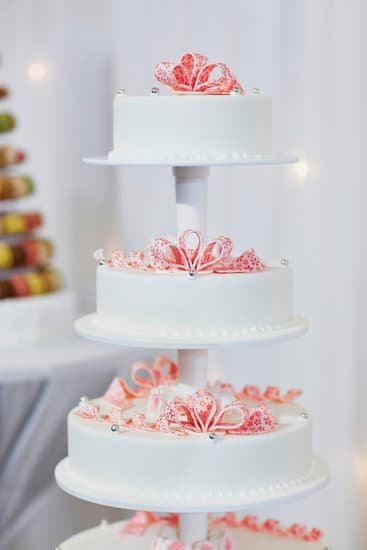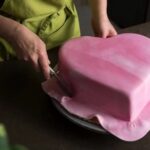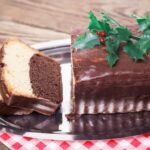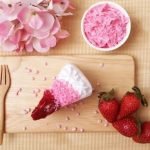Silver balls for cake decorating have become increasingly popular in recent years as a versatile and eye-catching decorative element. These small metallic spheres are used to add a touch of elegance, shimmer, and texture to cakes, making them stand out at any occasion. In this article, we will explore the world of silver balls for cake decorating, from their purpose and history to different types available on the market.
Silver balls serve both an aesthetic and practical purpose in cake decoration. They can be used to create stunning designs and patterns or simply provide a dazzling accent to any cake. Whether you want to achieve a classic, elegant look or experiment with modern and trendy cake designs, silver balls can enhance your creations.
The use of silver balls in cake decorating dates back several centuries when they were often made from real silver. Nowadays, edible silver balls made from sugar, fondant, or other edible materials are widely available. However, there are also non-edible options made from plastic or metal that are mainly used for decorative purposes only. Understanding the different types of silver balls available is crucial in choosing the right ones for your desired cake style.
Stay tuned as we delve into the diverse world of silver balls for cake decorating. From exploring various types of silver balls on the market and learning how to apply them to your cakes effectively to discovering creative ways to incorporate them into your designs, this article aims to inspire you and help unleash your creativity in cake decoration. Let’s dive in.
The Different Types of Silver Balls for Cake Decorating
Silver balls are a popular and versatile decorative element in cake decorating. They add a touch of elegance and shine to cakes, making them ideal for special occasions such as weddings or birthdays. In this section, we will explore the different types of silver balls available in the market and provide tips for choosing the right type based on the desired cake style.
There are two main types of silver balls for cake decorating: edible and non-edible. Edible silver balls are made from food-safe materials and can be consumed safely. These silver balls are typically made from sugar, gum arabic, or other edible substances that have been coated with edible silver dust or luster dust. Non-edible silver balls, on the other hand, are made from materials such as plastic or metal and are not meant to be consumed.
When choosing the right type of silver balls for your cake, consider the overall design and theme you want to achieve. If you prefer a fully edible decoration, opt for edible silver balls. These can be incorporated directly into icing or added as accents to fondant decorations. Non-edible silver balls are more durable and can withstand longer storage periods, making them suitable for cakes that won’t be eaten or need to last longer.
| Type | Edibility | Suggested Use |
|---|---|---|
| Edible Silver Balls | Edible | Directly applied on icing/fondant |
| Non-Edible Silver Balls | Not Edible | Mainly used as decorative accents |
In addition to considering the edibility of silver balls, it is also important to note that different sizes and finishes are available. Smaller silver balls are great for creating intricate designs or adding texture to a cake, while larger silver balls can be used as focal points or accents. As for finishes, some silver balls have a mirrored or metallic appearance, while others have a matte finish.
By choosing the right type of silver balls for your cake style, you can enhance the overall look and appeal of your creations. Whether you want to create a glamorous wedding cake or a fun birthday cake, silver balls can add that extra touch of sparkle and sophistication.
How to Use Silver Balls for Cake Decorating
Step-by-Step Guide on How to Apply Silver Balls to Cakes
Using silver balls for cake decorating can add a touch of elegance and glamour to any cake design. Whether you’re creating a simple and modern look or a more intricate and sophisticated design, the process of applying silver balls is relatively straightforward. Here is a step-by-step guide on how to use silver balls for cake decorating:
- Prepare your cake: Start by baking and frosting your cake as desired. Make sure the frosting is smooth and evenly applied before moving on to the next step.
- Decide on placement: Determine where you want to place the silver balls on your cake. They can be arranged in patterns, scattered randomly, or placed strategically as accents.
- Apply edible adhesive: To ensure that the silver balls adhere well to the cake, apply a small amount of edible adhesive such as royal icing or piping gel onto the area where you want the silver balls to stick.
- Place the silver balls: Using tweezers or clean hands, gently place each silver ball onto the adhesive in your desired pattern or arrangement. Press lightly to secure them onto the cake.
- Repeat and fill in gaps: Continue placing additional silver balls onto the adhesive until you achieve your desired look. If there are any gaps between individual balls, carefully fill them in with smaller sized ones using a toothpick or skewer.
- Finishing touches: Once all the silver balls are in place, take a moment to examine and adjust their positioning if needed. Use a clean brush or tissue to remove any excess adhesive that may have smudged onto the surface of the silver balls.
Techniques for Creating Different Designs, Patterns, and Textures with Silver Balls
While simply placing individual silver balls onto a cake can create a stunning effect, there are various techniques you can use to elevate your designs even further. Here are some techniques for creating different designs, patterns, and textures with silver balls:
- Ombré effect: Create a gradient effect by starting with larger silver balls at the bottom and gradually switching to smaller ones as you move upwards.
- Geometric patterns: Arrange the silver balls in geometric shapes such as circles, triangles, or lines to create a modern and sophisticated look.
- Mixed textures: Combine silver balls with other decorative elements like edible pearls, sugar flowers, or metallic accents to add depth and texture to your cake design.
- Clustered accents: Instead of scattering individual silver balls across the cake, cluster them together in specific areas to create focal points or highlight certain parts of the design.
Tips for Achieving a Professional Finish with Silver Balls
To ensure that your cake decorations using silver balls look polished and professional, keep these tips in mind:
- Consistency in size: Use silver balls that are uniform in size to maintain a cohesive look throughout your design.
- Placement balance: Pay attention to the distribution of silver balls on your cake. Aim for an even arrangement and avoid clustering them too densely or leaving large gaps between them.
- Cohesion with overall design: Consider how the silver ball decoration fits into the overall theme or style of the cake. It should enhance the design rather than distract from it.
- Practice on a dummy cake first: If you’re new to using silver balls for cake decorating, practice on a dummy cake or spare piece of fondant before attempting it on an actual cake to gain confidence and refine your technique.
Using these techniques and tips, you’ll be able to confidently incorporate silver balls into your cake designs, achieving professional-looking results that are sure to impress.
Creative Ways to Incorporate Silver Balls in Cake Designs
When it comes to cake decorating, silver balls can be an excellent way to add a touch of elegance and shine to any design. Whether you are looking to create a glamorous wedding cake or a festive celebration cake, there are endless creative ways to incorporate silver balls into your designs.
One inspiring idea is to use silver balls as a focal point in your cake design. For example, you can arrange the silver balls in a cascading pattern down the side of a tiered cake for a stunning waterfall effect. Another option is to create a decorative border around the edges of each cake layer using alternating sizes of silver balls. This adds both texture and visual interest to your design.
Silver balls can also be used as accents in your cake designs. For example, you can strategically place them on top of buttercream rosettes or piped flowers for a beautiful finishing touch. You can also incorporate them into molded fondant figures or shapes to add dimension and sparkle.
To take it up a notch, consider combining silver balls with other decorative elements for a truly show-stopping effect. For instance, you can pair them with edible gold leaf or edible glitter to create an opulent and luxurious design. You can also combine them with sugar pearls or dragees for an eye-catching contrast of textures.
Remember, when using silver balls in your cake designs, it’s always important to think about the overall aesthetic and theme of your creation. Choose colors and shapes that complement the style of the event or celebration you are designing for. With some creativity and experimentation, silver balls can elevate your cake designs from ordinary to extraordinary.
Tips for Incorporating Silver Balls in Cake Designs
- Experiment with different sizes and colors of silver balls to create visual interest.
- Use royal icing as an adhesive when attaching the silver balls onto your cakes.
- Consider adding other metallic accents such as gold or rose gold along with silver balls.
- Create unique patterns with silver balls such as stripes, chevron, or polka dots.
- Combine silver balls with other decorative elements like edible flowers or sugar bows for added dimension.
Examples of Trendy Cake Decorating Styles
- Geode cakes: Create a geode effect using silver balls in the middle of a cake to mimic crystals.
- Marble cakes: Add silver balls to a marbled fondant design for a touch of elegance.
- Drip cakes: Place silver balls along the edges of drips for a shiny border effect.
- Fault line cakes: Fill the fault lines with silver balls to highlight the textured design.
Remember, when it comes to incorporating silver balls into cake designs, the sky’s the limit. Let your creativity run wild and experiment with different techniques and combinations to create stunning and unique cake creations. Get inspired by browsing through cake decorating magazines or online platforms like Pinterest or Instagram.
Where to Buy High-Quality Silver Balls for Cake Decorating
When it comes to purchasing high-quality silver balls for cake decorating, it is important to select reputable suppliers that offer a wide range of options. Whether you prefer to shop online or visit a brick-and-mortar store, there are several reliable places where you can find the perfect silver balls for your creations.
Online stores such as Amazon and Etsy have become popular destinations for cake decorators looking to buy silver balls. These platforms offer a vast selection of options from various sellers, allowing you to compare prices and read customer reviews before making a purchase. Additionally, dedicated baking supply websites like Wilton and CakeSuppliesPlus also provide an extensive range of high-quality silver balls specifically designed for cake decorating.
If you prefer the experience of physically browsing and selecting your silver balls in person, local baking supply stores and specialty kitchenware stores are excellent options. These stores often have knowledgeable staff who can assist you in finding the right type of silver balls for your specific needs.
When purchasing silver balls, it is essential to consider the reputation of the supplier and ensure that they meet strict quality standards. Look for trusted brands that specialize in cake decorating supplies to ensure that you are getting products that are safe for consumption if using edible silver balls.
In terms of cost considerations, the price of silver balls may vary depending on factors such as size, quantity, and whether they are made from edible or non-edible materials. It’s helpful to set a budget beforehand and compare prices across different suppliers to make an informed decision.
| Recommended Stores |
|---|
| Amazon |
| Etsy |
| Wilton |
| CakeSuppliesPlus |
Safety Considerations When Using Silver Balls for Cake Decorating
Understanding Potential Risks and Mitigating Them
When using silver balls for cake decorating, it is important to be aware of some potential risks associated with their use. One of the main concerns is the presence of heavy metals in non-edible silver balls. These heavy metals, such as lead or mercury, can pose a health risk if ingested. To mitigate this risk, it is crucial to ensure that the silver balls being used are specifically labeled as food-safe and FDA-approved.
Another consideration when working with silver balls is the small size of these decorations. They can present a choking hazard, particularly for young children. It is advisable to avoid using silver balls on cakes intended for young children or to remove them before serving to little ones.
Edible Silver Balls and Safety Standards
To address these safety concerns, many manufacturers have started producing edible silver balls that meet strict safety standards set by regulatory authorities such as the FDA. These edible silver balls are typically made from materials like sugar or starch and are designed to dissolve harmlessly in the mouth when consumed. It is recommended to opt for these edible versions whenever possible.
When purchasing edible silver balls, always look for products that come with clear labeling indicating their safety standards and ingredients. Additionally, check for any warning labels or age restrictions on the packaging to ensure that they are suitable for your specific needs.
Precautions with Non-Edible Silver Balls
For non-edible silver balls that are strictly meant for decorative purposes, it is essential to take precautions when applying them to cakes. Make sure they are positioned securely so there is no risk of them falling off during transportation or consumption. It is recommended not to position non-edible silver balls near areas of the cake that will be sliced and served.
Overall, while there may be potential risks associated with using silver balls for cake decorating, these risks can be easily mitigated by choosing food-safe options, being mindful of potential choking hazards, and following proper placement guidelines. With proper care and attention, you can safely incorporate silver balls into your cake designs and create stunning and eye-catching desserts.
Silver Balls as a Trend in Cake Decorating
Silver balls have become a popular trend in contemporary cake decorating, adding a touch of elegance and sophistication to any design. With the rise of social media platforms and influencers sharing their stunning silver ball creations, more and more people are incorporating these shiny spheres into their cake designs.
This section will explore the rising popularity of silver balls in cake decorating, the impact of social media and influencers on this trend, and provide predictions for future developments in silver ball usage.
The use of silver balls as a decorative element in cake designs has gained momentum in recent years. Bakers and cake decorators are constantly looking for unique ways to make their creations stand out, and silver balls offer just that. Whether they are used as a focal point or an accent, silver balls add visual interest and create a glamorous finish that instantly elevates any cake design.
The influence of social media cannot be underestimated when it comes to the spread of trends like using silver balls in cake decorating. Platforms like Instagram and Pinterest have provided a platform for bakers and decorators to showcase their innovative designs featuring silver balls. Influencers with large followings often inspire others with their creative use of these shining decorations, leading to increased popularity and adoption of the trend by fellow enthusiasts.
Looking ahead, it is likely that the trend of using silver balls in cake decorating will continue to grow. As new techniques evolve and new designs emerge, silver balls may be incorporated in even more imaginative ways. From intricate patterns to elaborate geometric shapes, the possibilities are boundless. With advancements in technology allowing for greater innovation in manufacturing edible or non-edible silver balls, we can expect to see an even wider array of options available on the market.
Conclusion
In conclusion, silver balls are a versatile and eye-catching element that can greatly enhance cake decorating. From their origins as a traditional decoration to their rise in popularity in contemporary designs, silver balls have proven their ability to add elegance and flair to any cake. Whether you’re new to cake decorating or a seasoned professional, incorporating silver balls into your creations is sure to impress.
By exploring the different types of silver balls available, you can choose the right ones for your specific cake style. Edible or non-edible, there are options for every taste and preference. Additionally, learning how to apply silver balls properly will ensure a professional finish on your cakes. Techniques for creating various designs, patterns, and textures with silver balls allow you to let your creativity shine.
To further enhance your cake designs with silver balls, consider thinking outside the box and trying new ways to incorporate them. They can serve as focal points or accents in intricate designs and can be combined with other decorative elements for an awe-inspiring effect. Don’t be afraid to experiment and push boundaries – the possibilities are endless.
Lastly, sharing your beautiful silver ball cake creations on social media not only allows others to admire your talent but also helps inspire fellow bakers within the vibrant cake decorating community. So go ahead and embrace the trend of using silver balls in cake decorating – it’s time to let your imagination run wild.
Frequently Asked Questions
What are silver balls for cakes called?
The silver balls used for decorating cakes are typically referred to as dragees. Dragees are small round decorations that come in various sizes and colors, including shiny silver.
They are commonly used to add a touch of elegance and sparkle to cakes, cupcakes, cookies, and other baked goods. These metallic balls can be sprinkled over the frosting or pressed into the cake’s surface to create beautiful designs or patterns.
Are silver balls on cake edible?
Generally, silver balls on cakes or dragees are edible but not meant to be consumed in large quantities. Traditional dragees were made with a hard outer shell containing a tiny seed or nut inside. However, many countries have regulations regarding the use of these traditional dragees due to safety concerns over their hard composition which can pose a choking hazard.
In response, some modern dragees have a soft inner core covered in an edible metallic coating, but they may still contain firm non-edible layers beneath the outer shell for stability purposes. It is recommended to exercise caution when consuming silver balls and consider removing them before eating if they pose any risk.
What are cake decorating balls called?
Cake decorating balls are often referred to as sprinkles or sugar pearls, depending on their size and material. Sprinkles usually encompass a wide variety of small spherical decorative pieces made from sugar or chocolate that come in various colors and finishes such as matte or metallic. These sprinkles can be solid-colored or feature different shapes like hearts, stars, or even letters for customized designs.
Sugar pearls specifically refer to larger round decorations made from hardened sugar that resemble pearls found in jewelry. They provide an elegant touch when used on cakes and can vary in color and size depending on personal preference and design requirements.

Welcome to our cake decorating blog! My name is Destiny Flores, and I am the proud owner of a cake decorating business named Cake Karma. Our mission is to provide delicious, beautiful cakes for all occasions. We specialize in creating custom cakes that are tailored specifically to each customer’s individual needs and tastes.





